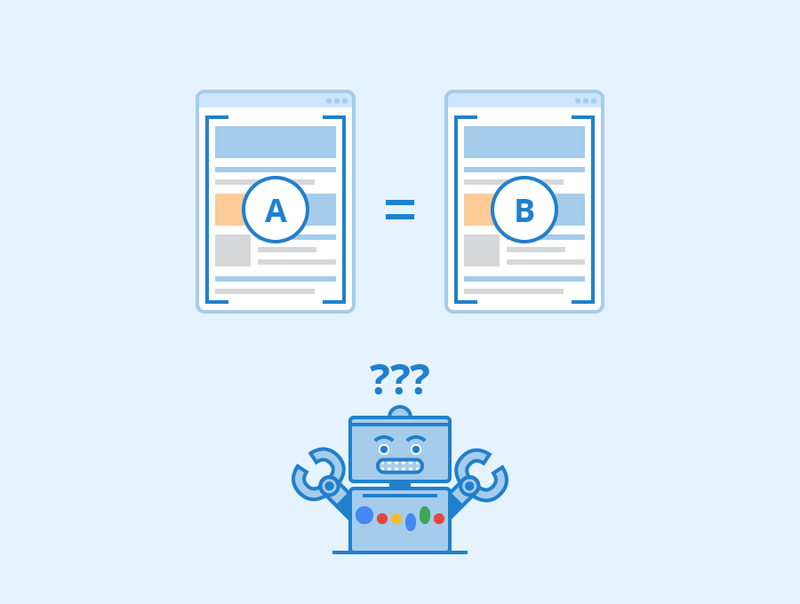What is Negative SEO and How to Defend Against
We all know that black hat SEO will ruin a website if detected by Google, so most of us abandon these techniques. However, your competitor may use negative SEO to hamper your rankings. Also, you may use negative SEO by yourselves. For example, you might hire an inexperienced SEO specialist (or SEO agency), who will build a ton of low-quality backlinks to your website, or spam your comment section, or pay for fake reviews.
In this article, we are going to talk about negative SEO — what it is, what you could do to detect it, and how to tackle a possible negative SEO attack.

Contents
What is Negative SEO?
Negative SEO is the act of using Black Hat SEO on other websites in order to get them penalized by Google. Negative SEO can take many forms but it’s usually a combination of the following tactics:
- Hacking your website
- Building hundreds or thousands of spammy links to your website
- Copying your content and distributing it all over the internet
- Removing the best backlinks your website has
- Fake reviews across the web.
How to Detect Negative SEO Attacks?
The first step in fighting a negative SEO campaign is just knowing that you’ve been hit with one.
Here are some signs of things that COULD be negative SEO.
- Has there been a sudden drop in your search traffic?
If the answer is yes and you haven’t made any significant changes yourself, this could be a red flag.
- Has google sent you a message saying that you’re taking actions against their guidelines?
This is a pretty straightforward way to see if someone is using negative SEO tactics against you.
- Has there been a spike in your backlinks?
You should be monitoring your links the same way you monitor your keywords, and if you notice a spike in your backlinks over time, or a significant change in their quality, this could be a sign of a negative SEO campaign.
- Is your content showing up everywhere?
Content scraping is taking your original content, word for word, and publishing on other websites. It’s an easy method for anyone wanting to attack you with negative SEO.

- Is your website loading slowly suddenly?
For more tech-savvy—and desperate—competitors, one option is to try and crash a site with excessive crawling. By forcefully and repeatedly crawling a site, a black-hat web developer can increase the load on the server, which affects the site’s performance. Taken to excess, this attack can decrease a site’s speed, or crash it altogether. In the case of a crash, search engines lose access to a site until the crash is resolved.
- Are there many negative reviews about your brand across the web?
This type of attack is self-explanatory. It simply involves posting false negative comments about a business’ products or services. If a website has a section for commentary, this type of attacker can also be found here, relentlessly posting baseless negativity without end.
How to Defend Against Negative SEO Attacks?
In this section, we’ll list all the types of negative SEO we’ve discussed with corresponding prevention steps and recovery tips.
| Negative SEO Tactic | Prevention | Recovery |
| Hack Your Website | 1. If you are using WordPress, install the Google Authenticator Plugin and create a 2-step verification password. 2. Create a strong password with numbers and special characters. 3. Create backups of your files and database on a regular basis. 4. If your website lets users upload files, talk to your hosting company and ask them how you can install antivirus to prevent malware. | If your site is the victim of a bogus redirect, deindexing, or any other form of negative SEO in which the perpetrator gained access to your website, correct the problem fast, then remove the access that allowed the hacking to occur in the first place. |
| Create Spammy Backlinks | We have no control over these sudden backlinks which are being sent by our competitors. However, a good practice would be to regularly check the backlinks to detect such malicious links. You could use the SEMrush, Ahrefs or other backlinks checker tools to perform a backlink audit. | If you do find that spammers are running negative SEO campaigns against your brand, submit a disavow file listing the attacking domains. This will instructs Google to ignore all links coming from bad domains, so they don’t affect your rankings. |
| Remove the Best Backlinks | Again, a tool like Ahrefs is invaluable. Mark your most important backlinks and ask to be alerted when they are removed. | For links that have been removed, reach out to the sites in question and ask them why the links were removed, and get them to reinstate them if possible. |
| Duplicate Your Content | You can use Copyscape to help you stay safe from scrapers. Just enter the URL of your content to discover whether there are any copies of it out there. | The first step when you discover duplicate content is to reach out to the webmaster. It’s entirely possible that the website’s editor or administrative staff didn’t realize the content was stolen, especially if it works with several contributors and guest editors. If you find that content was stolen maliciously, and the webmaster refuses to believe your content is the original, then turn to Google’s Online Copyright Infringement form. You can report scraped content to make sure Google acknowledges you as the true publisher and doesn’t hurt your SEO through a duplicate content penalty. |
| Generate Fake Reviews | Use an online reputation management tool to monitor all reviews on the web regularly. | Most review sites let businesses flag fake reviews. While you should respond to legitimate negative reviews politely and honestly, there’s no point in being courteous to fake reviewers. By flagging the fake reviews, Google and other review sites can identify spammers and stop them before they can damage the reputation of other brands like yours. |
| Crawling Your Site to Slow It Down | There are examples of desperate site owners trying to crash a competitor’s site by forcefully crawling it and causing heavy server load. If Googlebot can’t access your site for a few times in a row… you guessed it — you might get de-ranked. Google Analytics Alerts send you emails when your website loading time slows down, so you can identify when and why it’s happening. | If you notice that your site has become slow, or, worse, unavailable, a wise thing to do is contact your hosting company or webmaster — they should be able to tell you where the load is coming from. |
| Your Own Negative SEO Strategies | 1. Don’t link to penalized websites. 2. Don’t buy links from blog networks, and don’t buy links at all for SEO. 3. Don’t publish a massive number of low quality guest posts. 4. Don’t build too many backlinks to your website using “money keywords.” 5. Don’t sell links on your website without using the “nofollow” attribute. | Disavow all the low-quality backlinks you have built. |
Summary
Today, most websites are completely safe from negative SEO attacks. Google has gotten pretty good at catching spammy backlink blasts, so these types of attacks are unlikely to influence your rankings even if they happen.
However, you still have the chance to be attacked by negative SEO. Above, I’ve covered the most common negative SEO tactics and how you can protect yourself against them. Follow the guide to protect your website.
